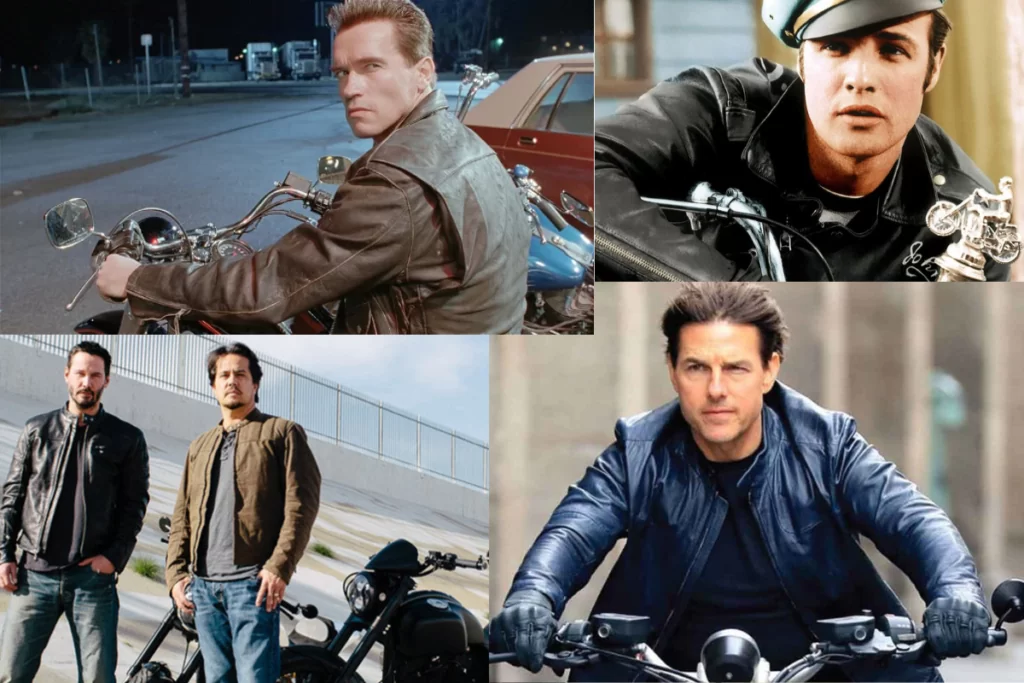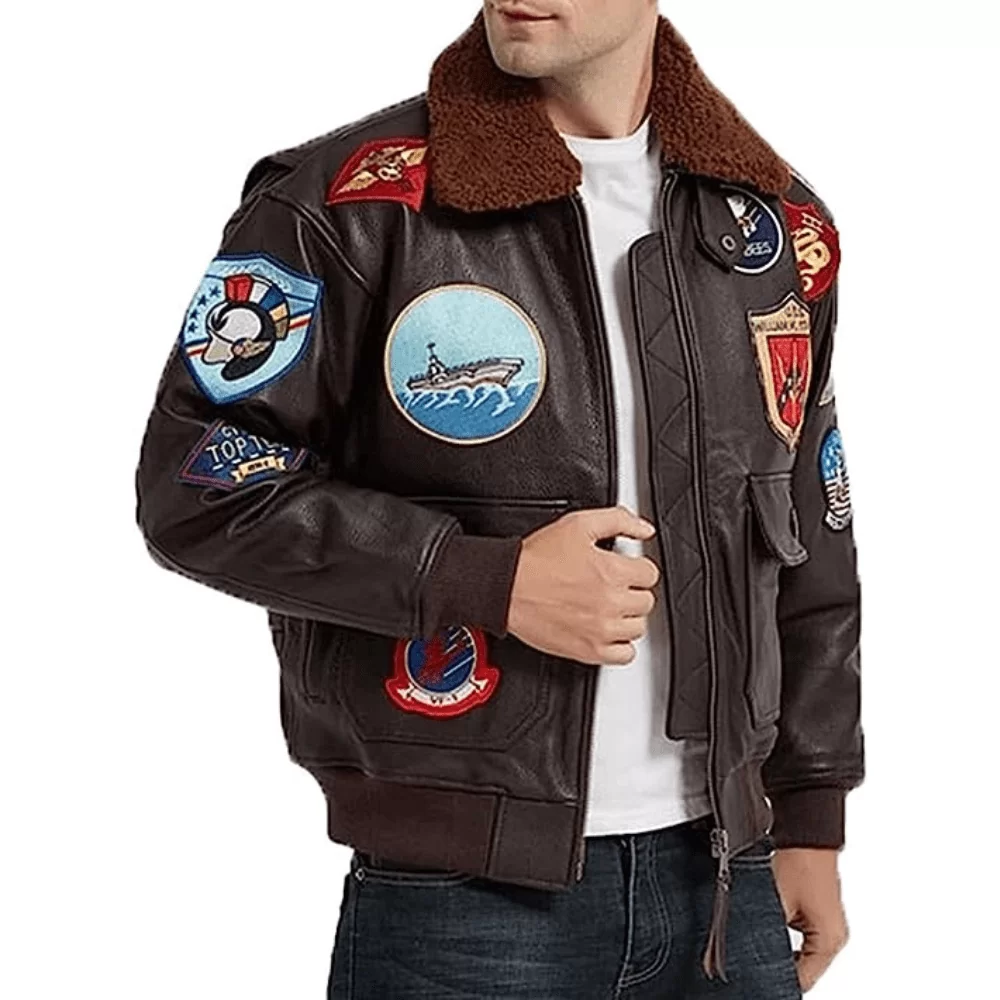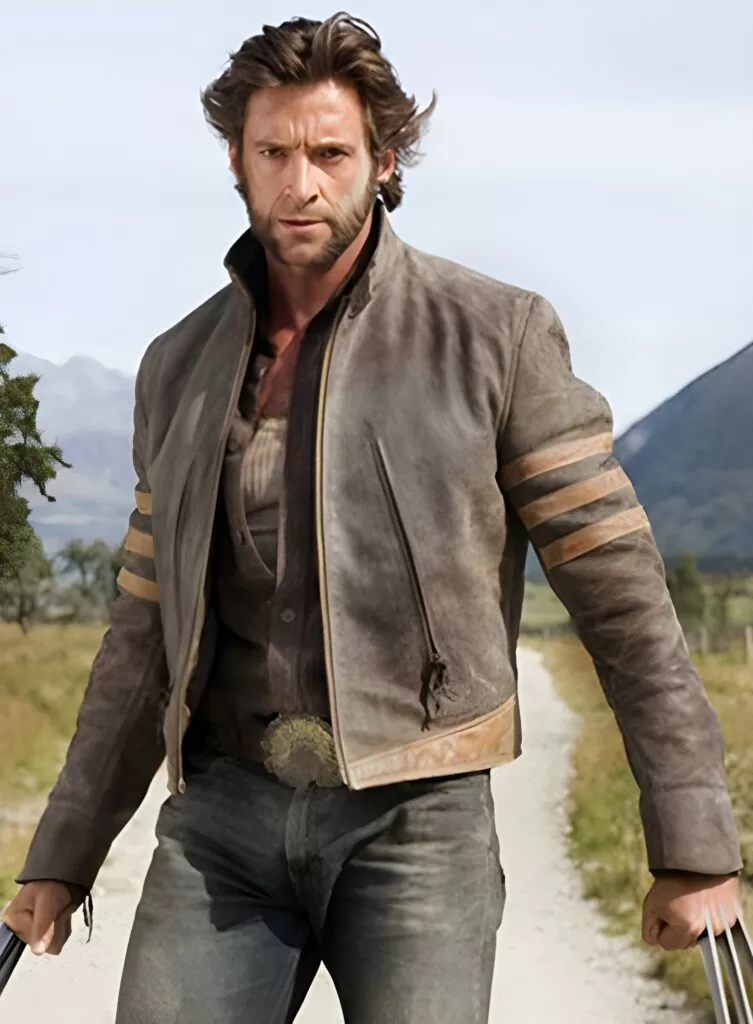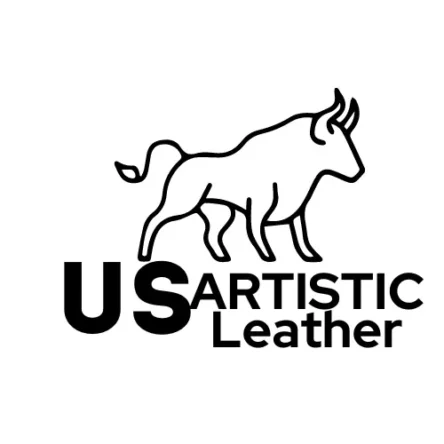
I. Overview of Leather Legends and Hollywood Heroes Wearing Leather Jackets
The iconic motorcycle leather jacket has become synonymous with rebellion, coolness, and a sense of untamed freedom. In the world of Hollywood and pop culture, these garments have transcended their utilitarian origins to become powerful symbols, worn by legendary heroes and antiheroes alike. This article explores the evolution and impact of motorcycle leather jackets in film and how they have shaped popular culture.
II. Historical Roots of Motorcycle Leather Jackets
A. Origin and Purpose
The origins of the motorcycle leather jacket can be traced back to the early 20th century. Developed for practical reasons, these jackets were initially designed to protect motorcycle riders from the harsh elements, wind, and potential road rash in case of accidents. The durable and thick leather provided a layer of defense for riders navigating the open roads.
B. World War Influence
The association of leather jackets with rebellion and toughness was amplified during World War II. Pilots and bomber crews wore leather jackets as part of their uniform, creating an indelible link between leather and heroism.

III. The Marlon Brando Effect: “The Wild One” (1953)
Marlon Brando’s portrayal of Johnny Strabler in the film “The Wild One” marked a pivotal moment in the cultural significance of motorcycle leather jackets. Brando’s rebellious attitude and the rugged aesthetic of his Schott Perfecto jacket cemented the garment’s association with the outsider, the renegade, and the cool rebel.
IV. James Dean: A Cultural Icon in Leather
A. “Rebel Without a Cause” (1955)
James Dean’s tragic yet timeless portrayal of Jim Stark in “Rebel Without a Cause” further solidified the leather jacket’s status as a symbol of youthful rebellion. The red jacket worn by Dean in the film became an enduring image, capturing the spirit of teenage defiance.
B. Enduring Legacy
Even decades after his untimely death, James Dean’s influence continues to shape fashion and pop culture. His leather-clad image remains an enduring symbol of coolness and nonconformity.
V. The Tough and the Tender: Leather Jackets in the 1960s and 1970s
A. “Easy Rider” (1969)
The counterculture movement of the 1960s embraced the leather jacket as a symbol of anti-establishment sentiments. In “Easy Rider,” Peter Fonda and Dennis Hopper’s leather-clad characters epitomized the freedom and rebellion associated with motorcycle culture.
B. Women in Leather: Empowerment and Rebellion
The 1970s saw the emergence of women embracing leather jackets, challenging traditional gender norms. Actresses like Pam Grier in “Foxy Brown” and Joan Jett in real life became symbols of female empowerment in leather.
Related Article: How Women Can Set Style with Bomber Leather Jackets
VI. The Maverick Cop: Leather Jackets in Action Cinema
A. Clint Eastwood as Dirty Harry
In the gritty world of 1970s crime dramas, Clint Eastwood’s portrayal of Detective Harry Callahan in the “Dirty Harry” series showcased the leather jacket as a staple for the maverick cop. The jacket became a symbol of toughness and a no-nonsense approach to law enforcement.
B. “Die Hard” (1988) and the Everyman Hero
Bruce Willis’s John McClane in “Die Hard” marked a shift from the polished superhero to a more relatable, everyday hero. The leather jacket became a visual cue for the modern action hero – flawed, determined, and unyielding.
VII. The Rise of the Superhero: Leather in the Comic Book Realm
A. Wolverine in X-Men
The superhero genre embraced leather as a part of the costume design, with characters like Wolverine in the X-Men franchise donning leather jackets. This marked a departure from the traditional spandex-clad heroes, adding a touch of realism and grit to the fantastical world of superheroes.
Related Article: X-Men Wolverine Brown Leather Jacket: Features & Specifications That Redefine Style

B. Christopher Nolan’s Batman Trilogy
Christian Bale’s portrayal of Batman in Christopher Nolan’s trilogy further elevated the Purple Joker Leather Jacket to superhero status. The sleek and tactical Batsuit incorporated elements of leather, emphasizing the fusion of style and function.
VIII. Contemporary Icons: Leather Jackets in Modern Cinema
A. Ryan Gosling in “Drive” (2011)
In the neo-noir thriller “Drive,” Ryan Gosling’s character dons a scorpion-embroidered white satin jacket, subverting the traditional black leather aesthetic. This film marked a modern reinterpretation of the classic leather jacket, blending style with an enigmatic antihero.
B. Margot Robbie as Harley Quinn
Margot Robbie’s portrayal of Harley Quinn in the DC Extended Universe brought a fresh, anarchic energy to the leather-clad antihero. The character’s vibrant and eclectic wardrobe, including her iconic “Daddy’s Lil Monster” jacket, became a symbol of irreverence and chaos.

Related Article: Top Trending Celebrities Leather Jackets to Buy
IX. Fashion Runways and Pop Culture Influence
A. High Fashion Embraces the Leather Aesthetic
Fashion designers and brands have consistently drawn inspiration from the rebellious allure of motorcycle leather jackets. Runways showcase leather garments, reflecting their enduring influence on high fashion and the broader cultural landscape.
B. Music Icons and Leather Jackets
From Elvis Presley’s rock ‘n’ roll rebellion to Michael Jackson’s “Thriller” era, music icons have also contributed to the popularity of leather jackets. These garments have transcended film to become a staple in the wardrobes of musicians, further solidifying their status as cultural artifacts.
Interesting Article: 5 Most Expensive Celebrities Leather Jackets
X. Final Words
The motorcycle leather jacket, with its roots in practicality and wartime necessity, has a powerful symbol of rebellion, coolness, and untamed freedom. From the iconic portrayals of Marlon Brando and James Dean to the modern reinterpretations in contemporary cinema, these jackets continue to capture the imagination of audiences worldwide. As fashion trends come and go, the enduring appeal of the motorcycle leather jacket in film and pop culture remains an indelible testament to its timeless iconography.

